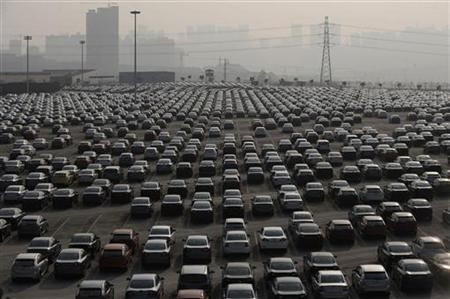Want To Drive In Shanghai? That'll Be $10,000 For A License Plate

The unprecedented consumption growth of 1.3 billion Chinese is taking a strong toll on China's environment and infrastructure. One area where China’s new status as economic superpower is cars. In 2009, China surpassed the U.S. in auto sales and is steadily growing. Good news for automakers, but new cars are being sold at a rate that Chinese roads can barely handle. The government has taken notice, and has inaugurated policies that, while limiting the number of cars, have provoked unintended consequences.
China implemented a policy at the beginning of 2010 that limits the amount of new license plate registrations issued in a given city per year, in an effort to mitigate high pollution levels and most of all, traffic. That sounded like a good idea, but clashed with one thing: the Chinese who can afford to drive want to drive no matter what.
In Shanghai, for example, the supply of license plates for is not meeting the needs of the population. The plates, which are distributed in auctions, are more unattainable than ever. On Monday, Shanghai Securities News reported that the average price of a license plate sold at auction this month had risen to more than 66,708 RMB, or more than $ 10,000. That’s more or less the average yearly income of a private-sector employee in Shanghai, according to figures cited by the People’s Daily newspaper.
The same report said that 19,921 people participated in this month’s auction, all of them vying for one of the 9,500 available plates issued each month.
In response, some car owners have resorted to driving without a license plate, which incurs a fine that is a fraction of the price of a license. Others are buying license plates from less populated nearby cities – and those prices are cheaper for now, but demand may soon drive them up to Shanghai levels.
Beijing has tested different tactics to decrease traffic. During the 2008 Olympic Games, the capital introduced a traffic ban that alternated days: license plates ending in an odd-numbers could drive on odd dates, and even-numbered plates would drive on even days, with the exception of public transportation and government vehicles. Reports showed the ban alleviated pollution and traffic congestion. As a result, permanent plans were set in motion.
After the Olympics, Beijing modified the ban so that only 80 percent of cars would be on the road at a given time. During the workweek, cars would be banned according to specific license plate end-numbers on specific days, and that schedule would rotate monthly.
Still, Beijing drivers willing to spend extra can avoid the ban. People have begun renting cars with different license plate end-numbers for the days their normal cars are banned, and that has some local businesses prospering. NPR reported that some rental car companies have seen a 70 percent spike in sales after the ban was put into effect.
China’s car and traffic policies are purposefully costly and cumbersome, but whether it's a $10,000 license plate or the price of a rental car, Chinese people still seem to think that being on the road is worth paying a lot for.
© Copyright IBTimes 2024. All rights reserved.






















